First Time Using An Infrared Camera
The title is a bit misleading. This writeup doesn't cover the very first time using an infrared camera but instead covers the first 3 times. Also, in a way, I haven't used the camera at all. All in all it averages out as the "first time using an infrared camera".
I don't remember when I first learned about infrared photography but it was a long time ago. I have dabbled with infrared photography but only in a roundabout way. That roundabout included a Pentax K-x dSLR and a Hoya R72 camera. The R72 filter will block most visible light and keep infrared. The problem is that pretty much all cameras will have a filter in front of the sensor that blocks most infrared light. These two things combine as well as toothpaste and orange juice. It means that normal daylight exposure times are around half a minute as most of the light gets stuck in the various filters. Whilst I liked the results, I'm not a tripod-kind-of person and I can't hand-hold a 30 second exposure. That meant that I've only shot a handful of photos this way.
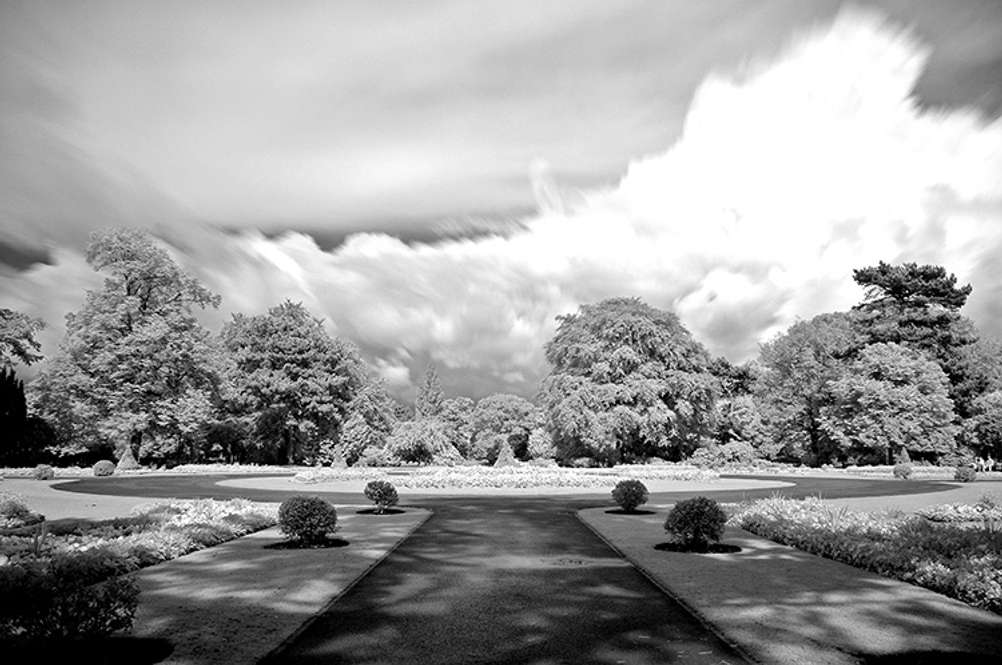
- Camera
- Pentax K-x
- Lens
- Pentax SMC DA L 18-55mm f3.5
Here's one of the long exposure examples. You can definitely get sweet results and I like the movement that long exposures bring but I'm just not willing to use a tripod.

- Camera
- Pentax K-x
- Lens
- Pentax SMC DA L 18-55mm f3.5
One of my favourite infrared photos from that time. You can still see movement here and I don't feel like it takes away form the image.

- Camera
- Pentax K-x
- Lens
- Pentax SMC DA L 18-55mm f3.5
You can also use the infrared filter as a strong ND filter to smooth out all movements in a city.
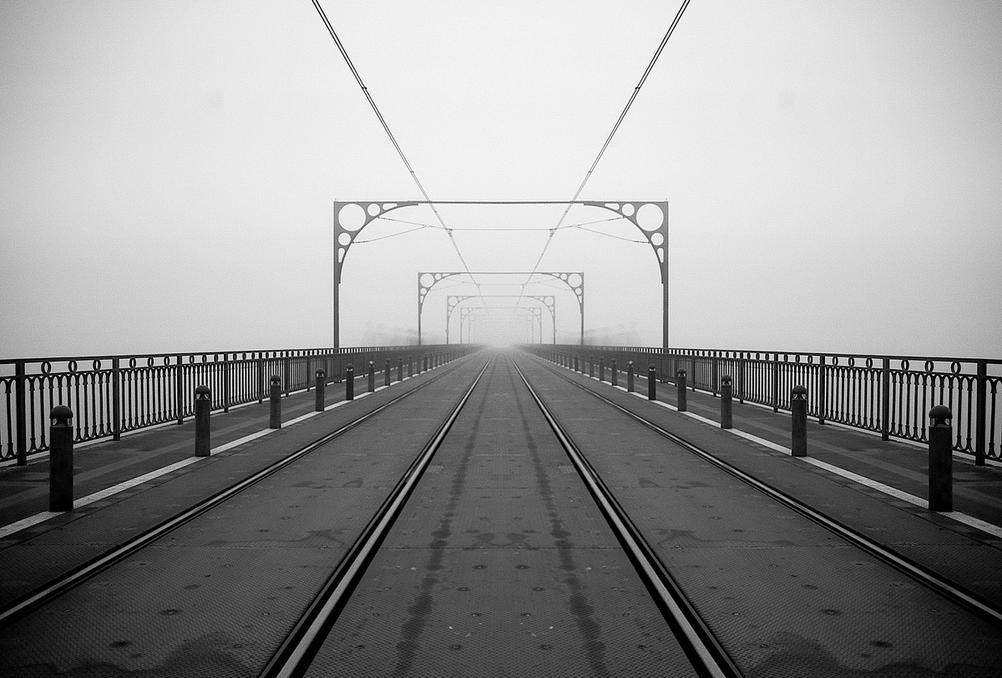
- Camera
- Pentax K-x
- Lens
- Pentax SMC DA L 18-55mm f3.5
Adding it not because it looks infrared but because I like this phot. It was taken with an infrared filter though. Helped with removing people from this scene as they were moving.
Another approach I've used was to use film with a stronger infrared sensitivity and a deep red filter. Results are infrared-like whilst not being fully infrared. The exposure times are more hand-holdable, especially in the sun, but it has its own set of challenges. Infrared photography can be quite hard to meter for as you don't see the infrared light and most light meters won't as well. The focus point is also not exactly where the visible light focus point would be.
My ultimate beginner intro into infrared photography was to get an infrared converted camera. It's a camera that has the infrared cut-off filter removed or replaced with a filter that blocks normal light. If you remove the filter all together then you would have to add an infrared filter on your lens which is a downside. Upside is that you can use it for normal photos and some other weird things like ultraviolet light photography. I wanted a pure infrared camera so having the normal filter replaced with an infrared filter was the right choice for me. It means that I can use any lens without the need to find and buy filters for it.
Infrared filters come in various strengths. Those strengths represent how much of the visible light gets blocked. If you block less of the visible light then it's possible to mix in some color into your infrared photos. I like black and white so I went with one of the strongest filters - a 850nm filter. The number is the wavelength of the light. A 850nm filter will block everything till 850nm. Visible light lives in the space between 400 and 700nm so all of the visible light and some infrared light would get blocked by an 850nm filter.
The Camera Of Choice
I didn't spend much time choosing the camera. Once I was set on what I wanted, I looked on Ebay to see what was available. I already had some adapters for Fuji and Sony cameras so those were the only ones considered. Sony is not terrible but I prefer Fuji so I went with the cheapest Fuji camera that was infrared ready. At the time it was a Fuji X-A1.
Fuji X-A1 is a beginner level camera released in 2013. It doesn't have a viewfinder so composing happens through an LCD. It's not perfect but as an intro to infrared photography it's well beyond what I need. It has a 16mpix, traditional bayer-pattern sensor instead of the X-Trans sensor. No problem whatsoever.
I quite like the camera. It's small and feels good in the hand. I would love a viewfinder though.
Using An Infrared Camera
Since I hadn't used an infrared camera I wasn't sure what to expect. What would the exposure times be? Could it only be used in sunlight? I have some of the answers.
What pleased me the most was that I could hand-hold most exposures. On a very cloudy day it does mean cranking the ISO higher than a 2013 camera would like it but for black and white it's fine. Having a live view also means that any focus shifts don't matter as you can see what you'll get in the LCD.
I also tried the TV remote test. It's where you point a TV remote at the lens and press some buttons. If your TV remote is old enough to work through infrared then you should see a light on the camera but not with your eyes. With a normal camera the light doesn't seem that strong. With an infrared camera a TV remote can be used as a small light source to light up a face for example. You can be in a pitch black room and use a TV remote to pick something out that you can't see with eyes. The camera would see it bright enough to take a photo. Cool.
One of the main effects of infrared photography is white foliage. For example tree leaves will appear white instead of green ( or gray in the world of black and white ). Problem is that it's winter outside now. Trees are white already so it's harder to see that effect. Also trees in the winter don't really have leaves. Quite a problem. Still, another effect is a dark sky instead of a blue one ( or gray one in the world of black and white ). That works in any season as long as clouds don't ruin your plans.
Clouds did ruin my plans. 90% of the days since I got the camera were bleak and gray. Everything outside looked like a very low contrast black and white photo. Just clouds and gray. Not the prime conditions for infrared photography. It did take some photos but it's not easy to tell that they are infrared.
Luckily I did get a chance to use it during the sun one day. It was glorious. The sky became almost black. Sadly there were no clouds ( to add some whites into the sea of black ) and it was very cold and windy. Regardless, I took some photos to experience the black void sky. Exposure times in sunlight are very reasonable. No tripods needed and ISO can be left in lower numbers. You definitely don't get the same readings as with visible light photography but it's fine.
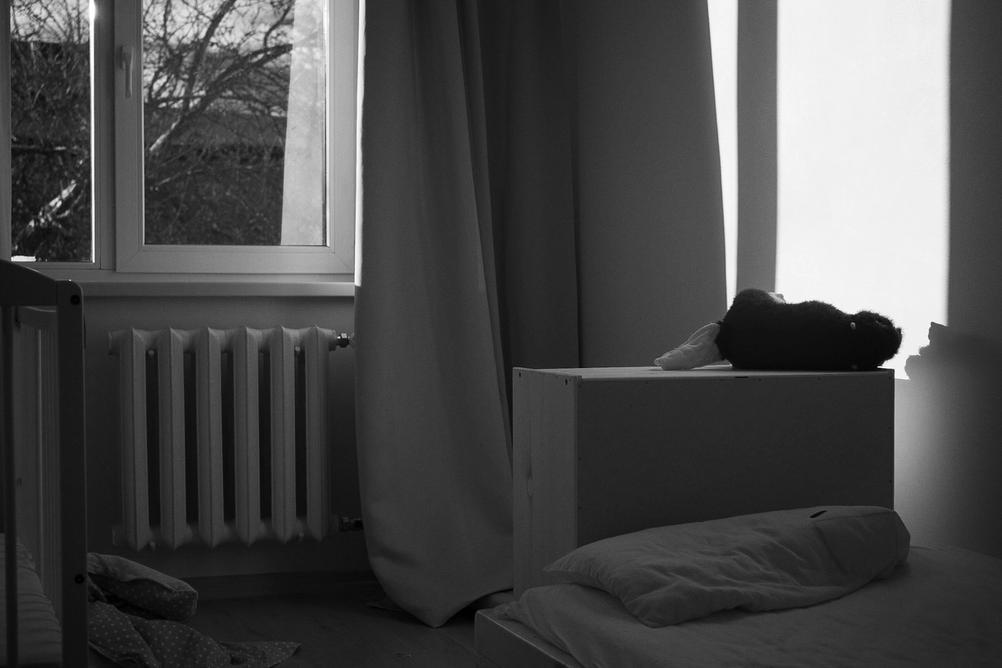
- Camera
- Fujifilm X-A1 ( infrared converted )
- Lens
- ZEISS Biogon T* ZM 35mm f2
Indoors it will be difficult to tell whether you're using an infrared camera or a normal one. The photos will look like normal black and white photos.
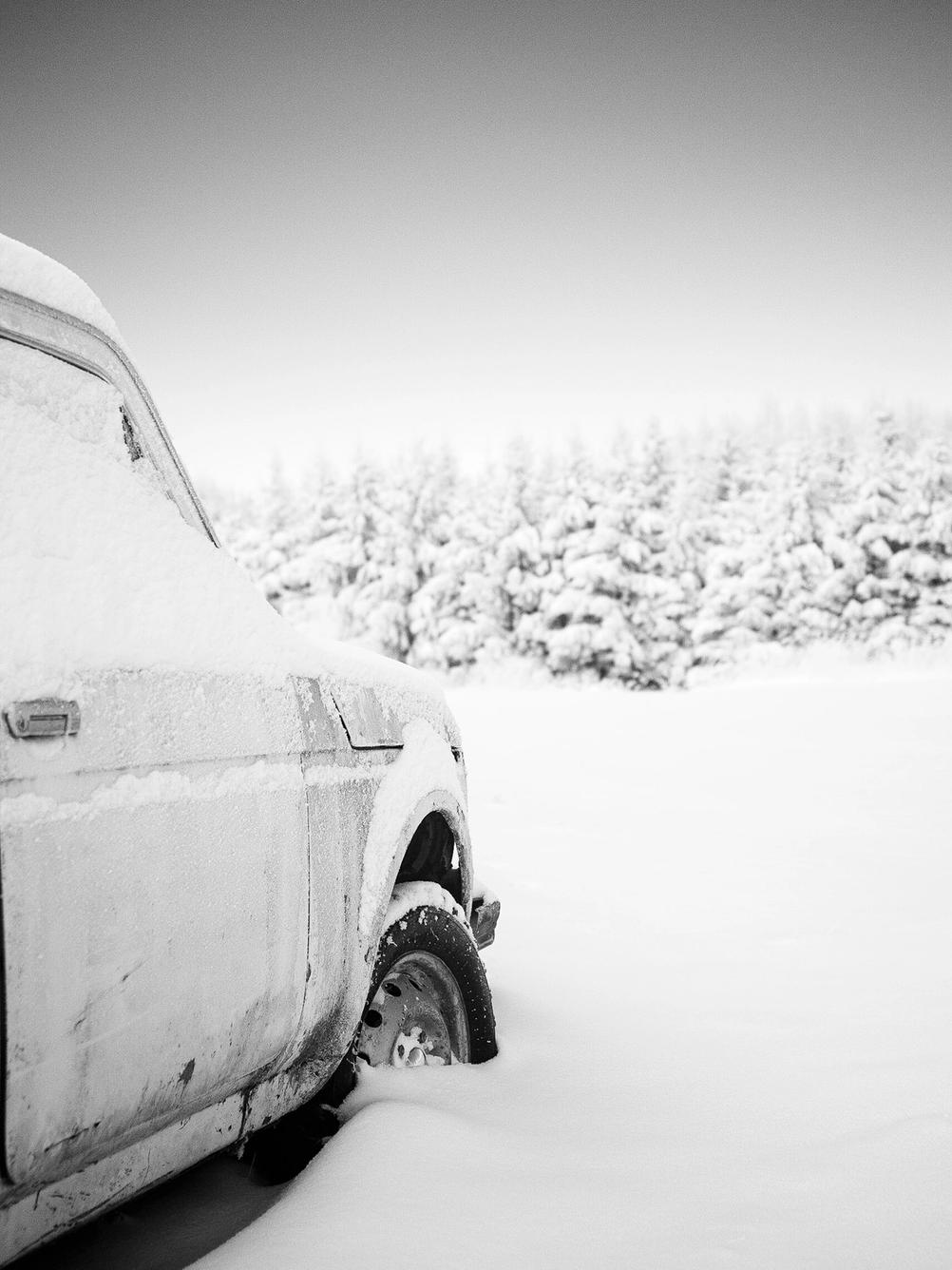
- Camera
- Fujifilm X-A1 ( infrared converted )
- Lens
- ZEISS Biogon T* ZM 35mm f2
Outside photos on on wintery and cloudy days can also look normal.
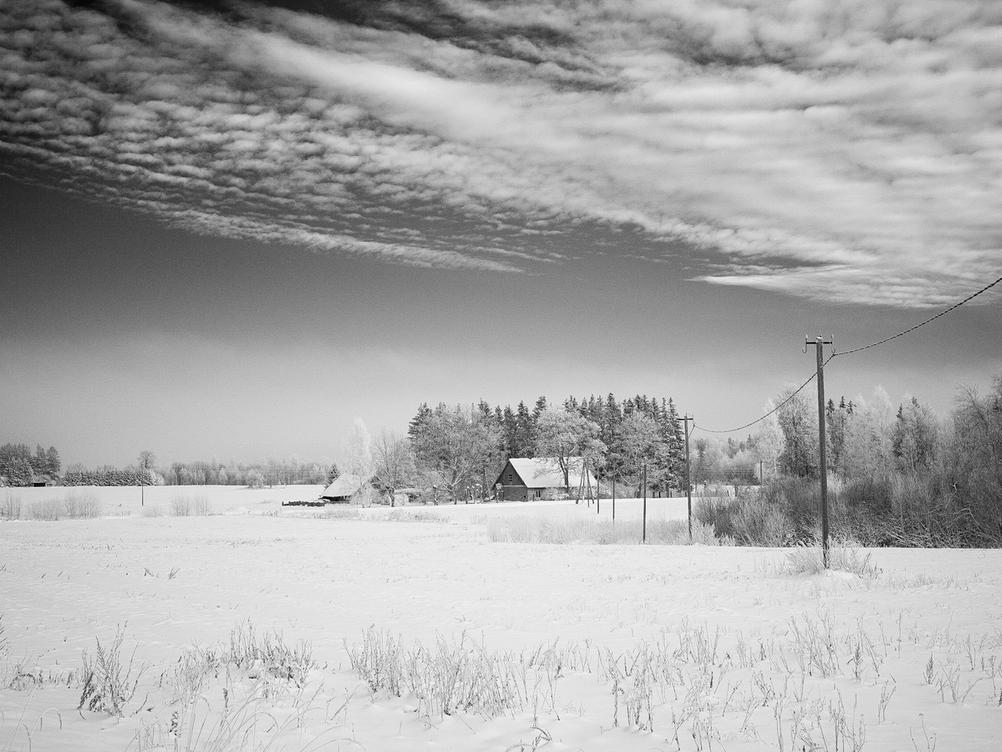
- Camera
- Fujifilm X-A1 ( infrared converted )
- Lens
- ZEISS Biogon T* ZM 35mm f2
It seems like you need sunlight to get truly dark sky. It's leaning towards the dark side but not by too much. The dark parts were pretty blue but the sun was behind clouds.
Once again a pretty normal photo that could be achieved with a normal camera. I do want to say that there is some extra tonality in the shades of gray which I like.
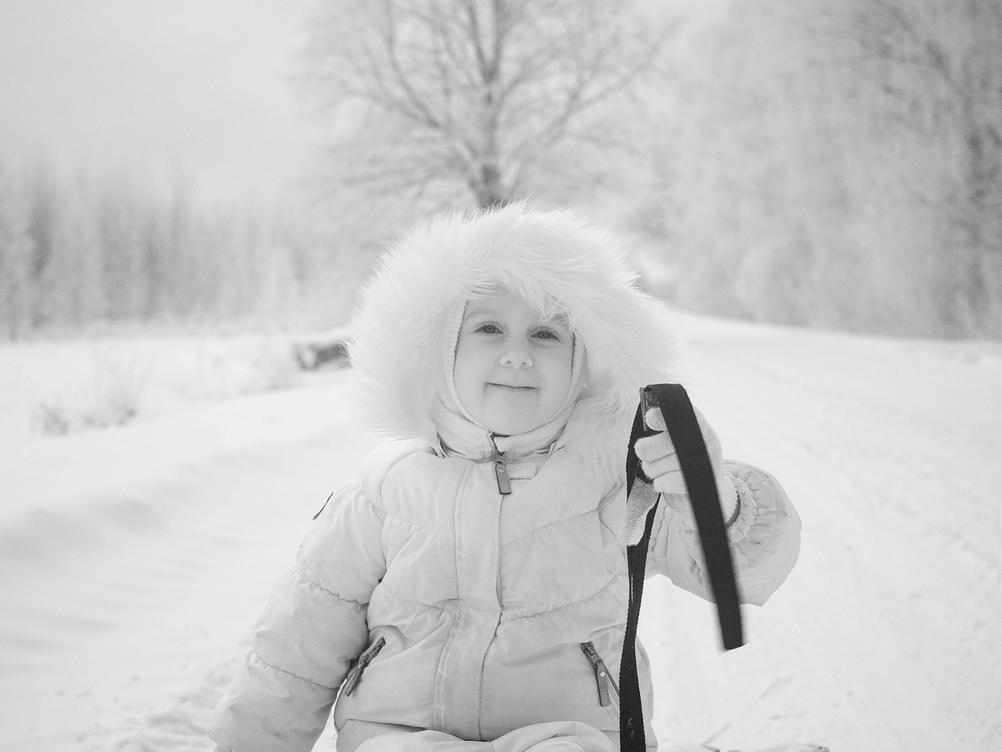
- Camera
- Fujifilm X-A1 ( infrared converted )
- Lens
- ZEISS Biogon T* ZM 35mm f2
People photos will reveal that there is something special about the taking camera. The eyes being the main giveaway. They get darker and don't look normal. The skin also softens and has a slight white glow.
The clothes also are a giveaway as long as you know how they look in real life. The jacket that my daughter wears looks very light, almost white. Not in real life. It's medium dark blue, light blue and orange. The hat is pink. You can't tell that it's not a single color from this photo at all.

- Camera
- Fujifilm X-A1 ( infrared converted )
- Lens
- Voigtländer Super Wide Heliar 15mm f4.5
Taken as the sun was starting to peak over the horizon during a sunrise. The sky starts to darken considerably. The trees also glow although that's not because of the infra-redness. Trees are covered in light frost that glows in sunlight so you would get a similar photo with a normal camera.

- Camera
- Fujifilm X-A1 ( infrared converted )
- Lens
- Voigtländer Super Wide Heliar 15mm f4.5
Adding this photo because of the cool lens flare. That is all.
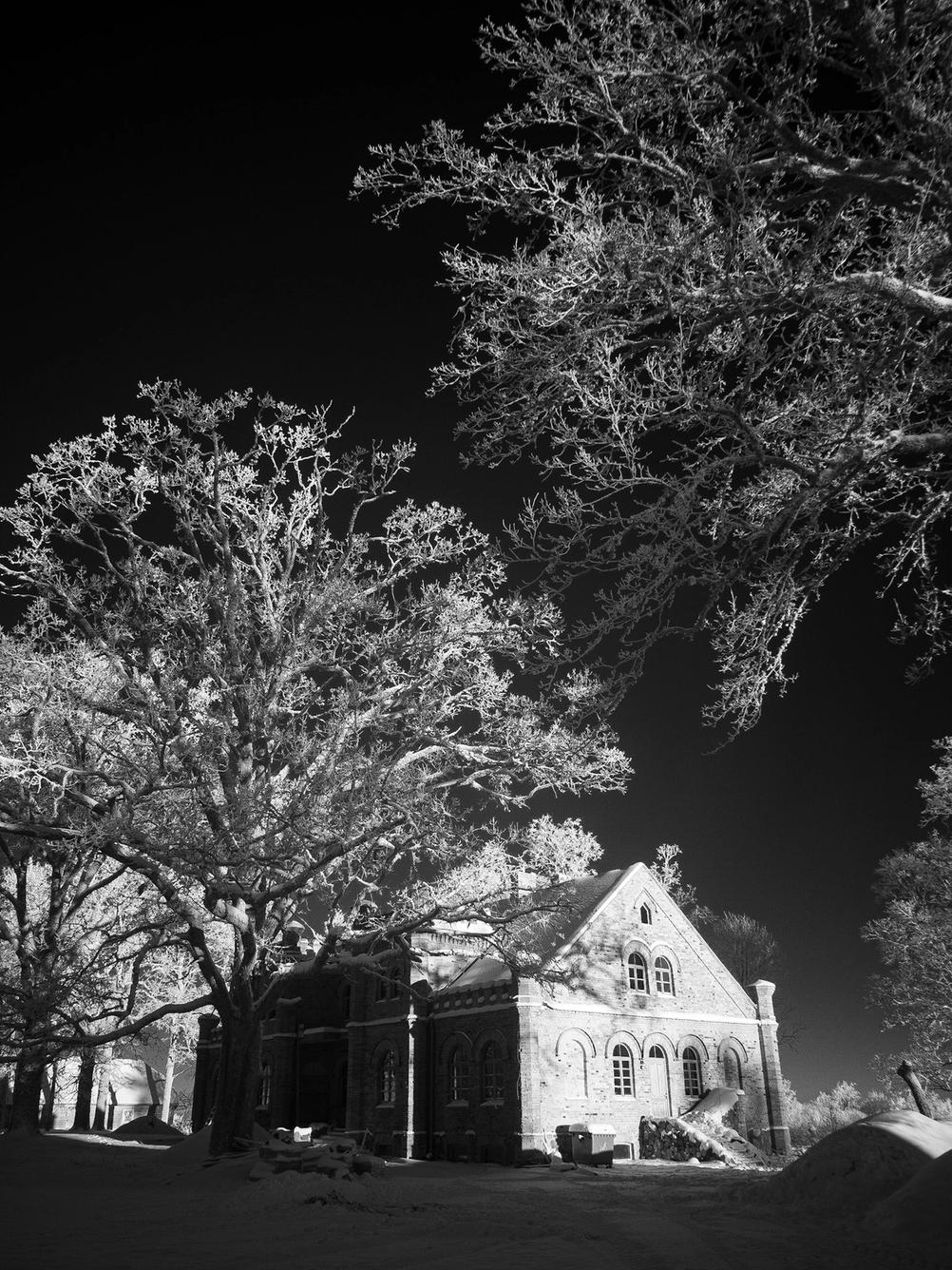
- Camera
- Fujifilm X-A1 ( infrared converted )
- Lens
- Voigtländer Super Wide Heliar 15mm f4.5
Here's a photo that would be a bit more difficult to achieve with a normal camera. It almost looks like it's been shot during night.

- Camera
- Fujifilm X-A1 ( infrared converted )
- Lens
- Voigtländer Super Wide Heliar 15mm f4.5
Snowy trees contrast very well against black sky. The weird radial highlight spot is likely caused by lens as some lenses can sometimes act weirdly in infrared world.

- Camera
- Fujifilm X-A1 ( infrared converted )
- Lens
- Voigtländer Super Wide Heliar 15mm f4.5
Gotta say that I like the black sky. Also I'm not sure whether it's extra nice tonality or that infrared just lights things differently but I like how the black and white tones look like.
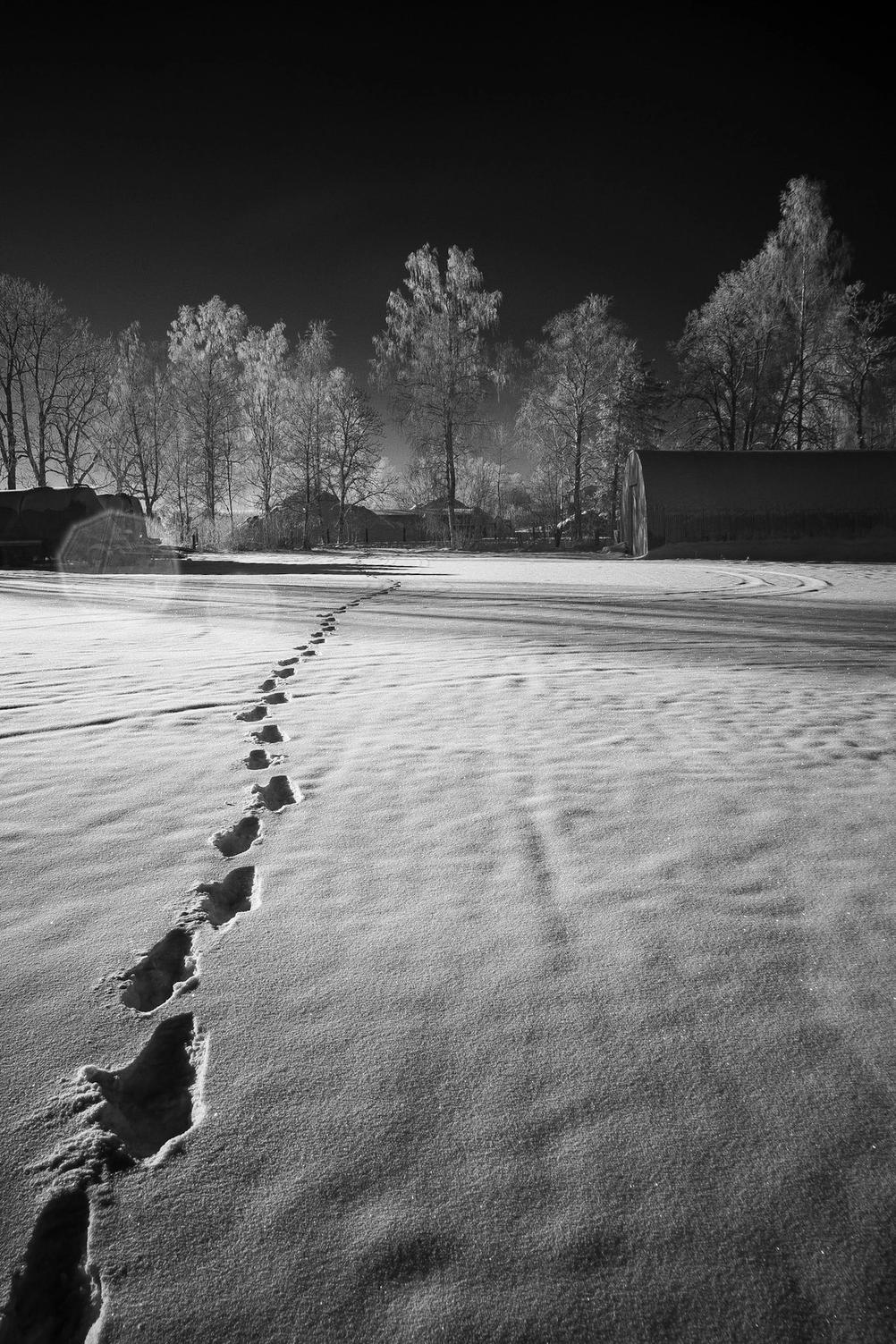
- Camera
- Fujifilm X-A1 ( infrared converted )
- Lens
- Voigtländer Super Wide Heliar 15mm f4.5
Although all of the photos that I've posted look very contrasty, they actually come out very flat out of the camera. I really push the blacks down and whites up to achieve the look that I want. Not a bad thing, just an observation.
What Will The Future Hold
I will use this camera more. I have some ideas that could work well in winter but I need sunlight instead of clouds. I'm also looking forward to the future where snow will melt and leaves will appear on trees. Surely the sun will show its head more often as well.
This word salad of a writing isn't a tutorial for infrared photography as you can tell. More of a brain dump of first experiences. I will definitely write more about it in the future. In the meantime I have to get more comfortable with it.
